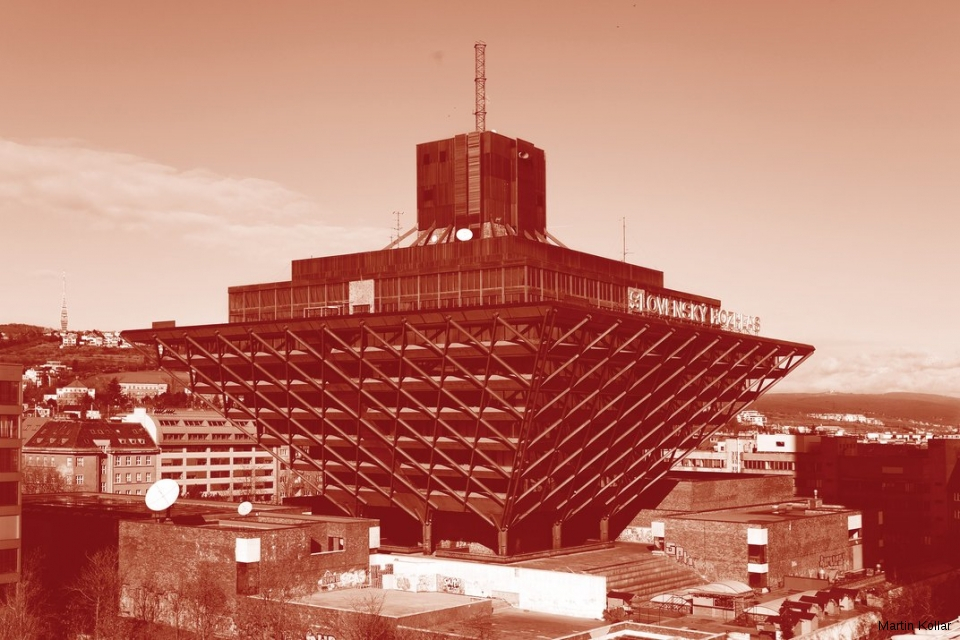For residents of Slovakia's capital, Cold War structures recall a painful past
We seemed to be floating in space, hovering high over the Danube as we gazed out at the twin halves of Bratislava. To our left we saw needlelike church spires, cobblestone lanes, bulbous onion domes, and a hilltop castle. To the right stood a vast maze of massive apartment blocks that appeared to have been dropped next to a dense, green space. From our unusual perch on the Bridge of the National Slovak Uprising (or Most SNP in Slovak), my guide and I saw the broad river and a thin road hundreds of feet below over which tiny cars streamed like ants.
Anyone in those tiny cars would be forgiven for thinking that a silvery disk was landing on the bridge, as if it were a UFO from an old science fiction movie. Nor would it be strange to feel a vertiginous sense of distance and perhaps a frisson of fear while gazing at the odd construction.
But inside the bridge’s circular observation deck, the feeling was one of cheer and comfort. A DJ played tracks of chill-out music. Bartenders mixed fancy cocktails. A pleasant waitress arrived with our drinks, and we raised our glasses to the Slovak capital and the bizarre bridge we were visiting, part of the city’s highly unusual collection of communist-era buildings.
For most people in Bratislava, the city’s main attraction has to be its old town, whose baroque palaces and other historic buildings echo those of Vienna, Prague, and other nearby capitals. But for travelers from outside the country, Bratislava’s bridges, apartment blocks, and other constructions recalling the Soviet sphere of interest have a unique appeal. Occasionally quite refined despite their dehumanizing scale, the buildings combine elements of mid-century Scandinavian modernism, British brutalism, French post-modernism, and Stalinist pomposity. Some are truly beautiful. Others, like the 1973-built UFO bridge—officially the SNP but also known as Nový Most (New Bridge)—are truly weird. But Bratislava’s remarkable collection of planned-economy architecture is unlike almost anything else still standing in central Europe.
Despite this distinction, the buildings seem unloved by locals: In recent years, many of them have faced major redesigns, if not demolition. After gawking at some hard-to-believe photos in Eastmodern, a glossy, coffee-table book about Bratislava’s communist architecture, I took a high-speed train from Prague to see it firsthand.
A little over four hours later, I was staring up at a huge inverted pyramid rising almost 300 feet overhead. Known as the Slovak Radio Building, it includes a number of sound-insulated recording studios at its core, with outward-facing offices surrounding them on each floor. The edge of each rusty brown level extends far out beyond the one below it, and a crisscross network of supporting beams covers the facade with a heavy net. As a whole, it gives off a feeling of immense weight, which seems to push down on the entire neighborhood.
“One architectural blog called it one of the ugliest buildings in the world,” said my guide, Juro Sikora, who leads tours of Bratislava’s communist-era sites for Authentic Slovakia, a local company. “For people who believe in feng shui, this is the worst possible shape you can have.”
